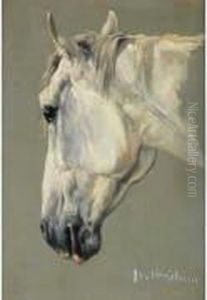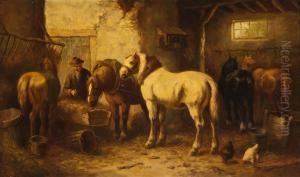C. Verschuur Paintings
Charles Verschuur, born in 1812 in Amsterdam, was a 19th-century Dutch Orientalist painter known for his depictions of horses, genre scenes, and landscapes. His full name being Wouterus Verschuur Jr., he was the son of Wouterus Verschuur, a renowned animal painter, which greatly influenced his decision to follow in his father's artistic footsteps.
Verschuur's talent became evident at a young age, and he received his initial artistic training from his father. He later studied at the Amsterdam Academy, where he honed his skills and developed a distinct style. His early works were primarily genre scenes and landscapes, but as his career progressed, he became increasingly interested in Orientalism, which was a popular trend among European artists in the 19th century. Orientalist art was characterized by its depiction of the Middle East and North Africa, often romanticizing and exoticizing the cultures and landscapes of these regions.
Throughout his career, Verschuur traveled extensively, which allowed him to observe various horse breeds and equestrian customs firsthand. These experiences enriched his art, and his paintings often featured horses in different settings, from tranquil pastoral scenes to the bustling life of the Orient. His attention to detail and ability to capture the grace and power of these animals earned him a reputation as a skilled horse painter.
Despite his father's considerable influence, Charles Verschuur established his own artistic identity, combining his love for animals with his interest in exotic locales. He participated in numerous exhibitions and was well-regarded among collectors and fellow artists. His works were appreciated for their realism, lively depiction of animals, and the atmospheric quality of his landscapes.
Charles Verschuur's contribution to the 19th-century art scene was significant, especially in the context of the Orientalist movement. His paintings remain in various art collections, and his legacy is that of an artist who was able to bridge his cultural surroundings with the allure of distant lands. He passed away in 1893, leaving behind a body of work that continues to be studied and admired for its historical value and artistic merit.

